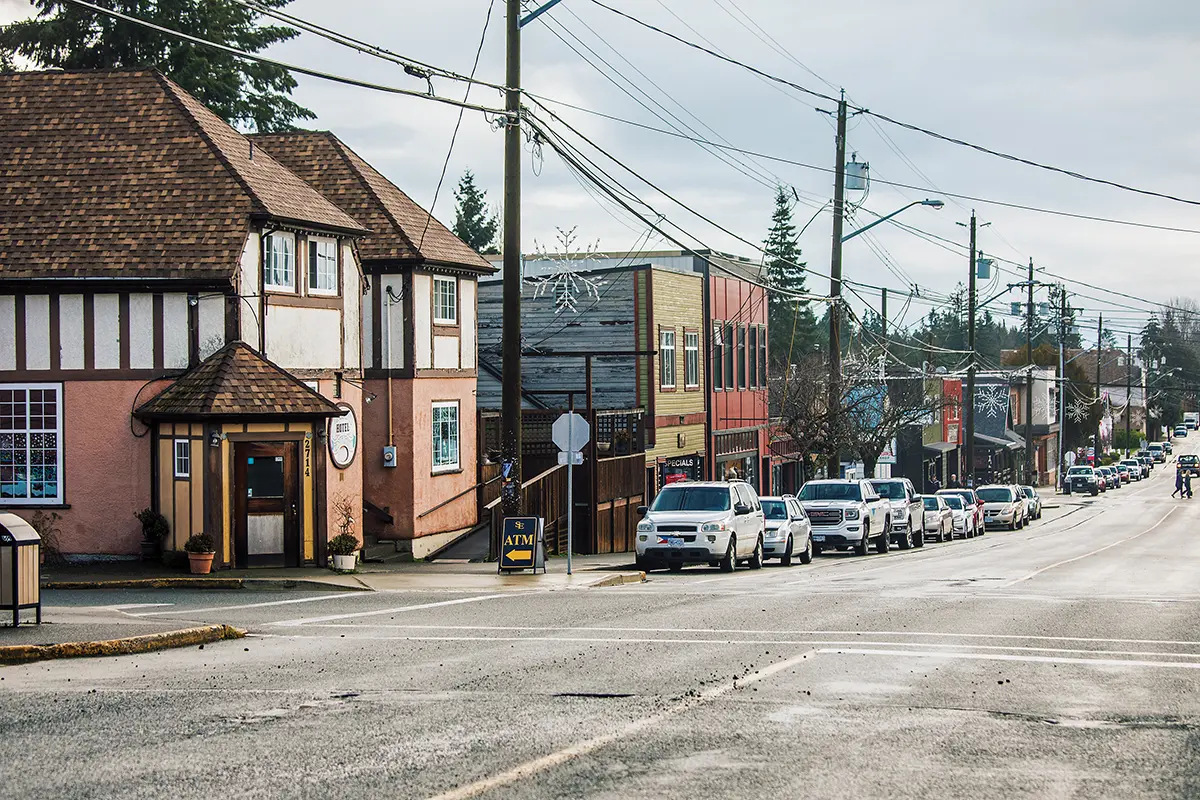Fast fashion is no match for one-of-a-kind thrift finds and new local thrift stores are opening to meet the demand
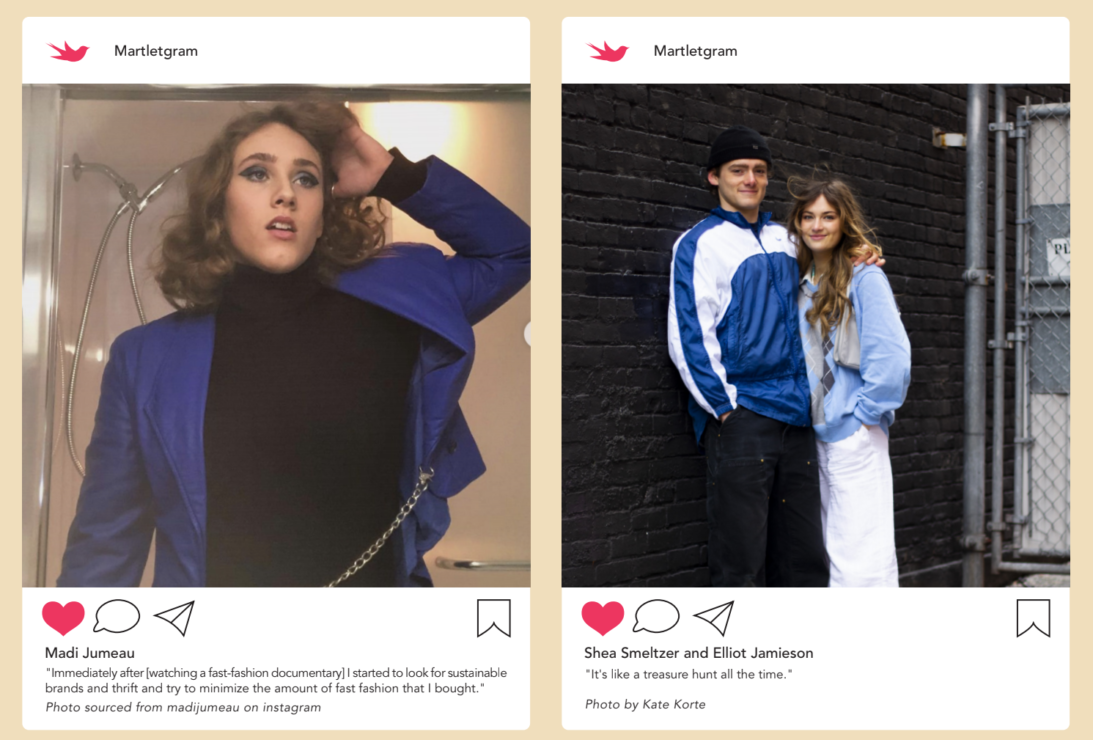
When I met with Dana Johnson, she instantly introduced me to Bernie. Bernie, she says, was a hit at pre-pandemic parties. After finding it at a pop-up vintage shop, she went back the next day to buy the bolo tie.
“I went home and all I did all night was dream of Bernie,” Johnson said. “I love this little dinosaur.”
Johnson is an environmental studies and geography student at UVic. She says she has always tried to buy second-hand items that last. Her shoes are hand-me-downs from her mom, who bought them when she was pregnant with Johnson.
“I stopped buying [fast fashion] because I needed durable clothing,” Johnson said. “And then after the fact I started to come to the realization that fast fashion was choking the planet.”
Fashion is a massive industry — it employs one in six people worldwide. But according to Fashion Checker, 93 per cent of brands don’t pay the workers making their clothes a living wage. Johnson is particularly concerned by microplastics, often found in synthetic fabrics, that are released into the waterways when the fabric is washed. Thirty-five per cent of the primary microplastics in oceans come from this process.
Through thrifting, some UVic students like Johnson have learned to appreciate the treasure hunt that comes with combing through rows of second-hand clothes. The Martlet spoke to five UVic students and two local business owners about their style, what they love about thrifting, and why they’ve decided to kick fast fashion to the curb.
Sustainability is in style
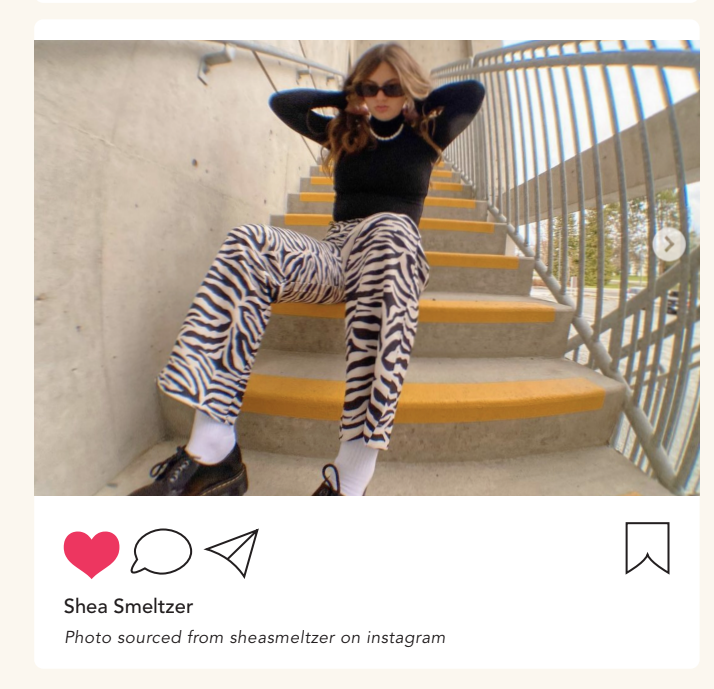
Shea Smeltzer and Elliot Jamieson are second-year students at UVic. We tucked into an alley to take photos on a cold morning. Smeltzer is wearing a blue sweater vest that Jamieson, her partner, got her for Christmas. Jamieson wears a matching Nike windbreaker and long-sleeve shirt with Carhartt pants. Their entire outfits are thrifted, excluding Smeltzer’s handmade beaded necklace.
Jamieson says his parents thrifted growing up and that he grew to appreciate it more as an adult because of the sustainability aspect and cheaper cost of thrifted clothes. He typically shops for vintage outdoor gear or sportswear from brands like Nike or Adidas.
“It’s like a treasure hunt all the time,” he said. “And whenever you can get anything used, second-hand, [or] thrifted it’s just so much better for the environment.” Smeltzer agrees — she says there is still a stigma around thrifting as dirty or gross when in reality it often nets more unique and sustainable finds.
“My style changes like every week,” Smeltzer said. She goes thrifting with her Pinterest-board inspiration in mind.
Madi Jumeau is a geography student and rugby player at UVic who also looks to Pinterest for thrifting inspiration. Jumeau describes her style as “eclectic.” She likes vintage clothes from the 70s and 80s and enjoys combining patterns and colours. When we meet up downtown, she is wearing a favourite thrift find — a brown leather jacket that was a “pricy” $35. Although she has thrifted from a young age, she became more aware of the fast fashion industry in grade 12.

“Immediately after [watching a fast fashion documentary] I started to look for sustainable brands and thrift and try to minimize the amount of fast fashion that I bought,” she said.
According to the United Nations, fashion is responsible for nearly 20 per cent of global wastewater and 10 per cent of global carbon emissions. The fashion industry uses more energy than aviation and shipping put together.
Smeltzer was motivated by the ills of the fast fashion industry to start thrifting more.
“There’s so many fast fashion websites for women, like Shein and Fashion Nova, that drop thousands of new things a week and it’s all made by child labour and it’s all like three dollars,” Smeltzer said. “It’s not even possible to make something [for that amount of money].”
The International Labour Organization estimates that 170 million children are engaged in child labour. The majority of those children are young girls working in the garment industry in Global South countries like Bangladesh, Egypt, and India. In a report titled Flawed Fabrics, the Centre for Research on Multinational Corporations (SOMO) describes how families are often told their children will be fed, housed, and work for a good wage. In reality, SOMO reports that “exploitative employment schemes and substandard working conditions remain widespread.”
While Johnson is also concerned about the social and environmental impacts of the fast fashion industry, she says thrifting is merely a reply to the waste created by a broken system. Johnson says there is a bad side to thrifting — thrifters taking quality name-brand items off the racks can leave few options for people that can’t afford to invest in those items otherwise.
“Thrift shopping seems like it’s an antidote to fast fashion, but it’s just a response to it,” Johnson said, adding that it can be hard for people of bigger sizes to find clothes thrifting. “I understand [fast fashion] is a means for a lot of people to get the clothing they need at relatively affordable prices […] thrift store shopping is a way for people to have access to a variety of clothing, fast fashion or otherwise, at an affordable price.”
Her approach is to only buy clothes that she needs and get them from stores where the money is going to a good cause, like clothes swaps for charity at Women in Need in Victoria. She also says people sometimes leave good finds on the side of the road.
“If you’re only in it for the fashion and for looking cool, at least try to support businesses that the money is going to the right place,” Johnson said. “With anything, there’s good intentions and then there’s impact.”

Local thrift stores stay strong during pandemic
Between Instagram resellers, consignment shops, and standard thrift stores, there are ample options for thrift shopping in Victoria. Shops like Duchess and Duke, Vintage After Death, Victoria Vintage, Flavour Upstairs, and the Patch offer second-hand clothes at a higher price point. Salvation Army and Value Village are more affordable but often require more hunting to find quality clothes. However, Salvation Army has also funded conversion therapy camps in the past and Value Village was sued for deceiving the public about how much money they donate. Each business has their own unique approach to second-hand clothes, and their own metrics for deciding what to keep on their racks.
Szandi Szabo and Mackenzie Wavryk say their local businesses have seen great community support, even during COVID-19.
Szabo opened her business, Csinos Vintage, in July 2020 after initially selling clothes on Instagram out of her apartment. Her newly opened shop is nestled in a little loft in Fernwood, which she shares with the sex and lingerie shop Intamo. Szabo says both Csinos and Intamo have been doing well, despite the pandemic.
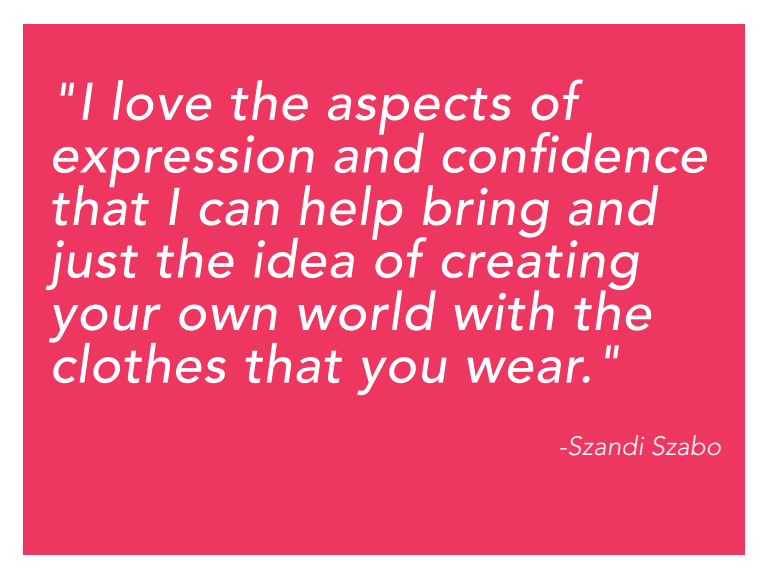
Szabo usually buys clothes for the shop outright by connecting with sellers on Instagram. She tells me about one older gentleman that sold her a collection of Harley Davidson tees and told her the stories behind each tee before parting with them. Before COVID-19, she would also travel and collect vintage finds to bring back to Victoria and sell.
For Szabo, fashion runs in the family. Her grandmother was a hand embroidery artist and her grandfather was a cobbler. Some of the things in the shop were items from her grandmother, which Szabo says are the hardest ones to part with.
“I love the aspects of expression and confidence that I can help bring and just the idea of creating your own world with the clothes that you wear,” Szabo said.
Wavryk opened Upcycle in October 2019. Like Szabo, Wavryk’s business started as a passion for thrifting. Wavryk started selling on Instagram. When she hosted a clothing pop-up in her garage with her mom, she quickly realized that there was a market for her thrifted finds in Victoria.
She says the pandemic gave her an opportunity to pause and evaluate her business practices, especially when they had to stay closed in the early days. Now, Wavryk has expanded Upcycle’s social media presence and reorganized the store to make room for more high quality items.
“Consignment to me means the reusability of good quality clothing and good quality clothing tends to be vintage clothing so those are the pieces I look for the most,” Wavryk said. “My niche is definitely affordability and modern and contemporary clothing.”
Wavryk doesn’t buy clothes outright like Szabo. Instead, she operates on a consignment basis — this means that the people that come in and want to sell their clothes get a portion of the profit, if their clothes are approved. Wavryk also donates clothes that don’t fit for her shop to Our Place. Every two weeks, she says they donate approximately seven garbage bags of donated clothing.
She recently started carrying Today denim, which is a company that remakes vintage denim jeans and jackets to a more modern fit. Being able to give these businesses like this a place to sell their products was important to Wavryk.
“Connecting with the people that want to buy second-hand clothes or maybe don’t have the courage to know exactly what to buy if something doesn’t fit exactly right has been a lot of fun, too,” she said.
Finding your fit
Johnson says she looks for fun colours, natural fabric, and comfort when she is shopping for clothes. In general, she likes to wear clothes that make her laugh and make other people laugh too — the Bernie bolo tie being a clear example.
“If you know me, I wear the same clothes all the time […] having the same set of clothes and changing the way that I style them or whatever is really fun.”
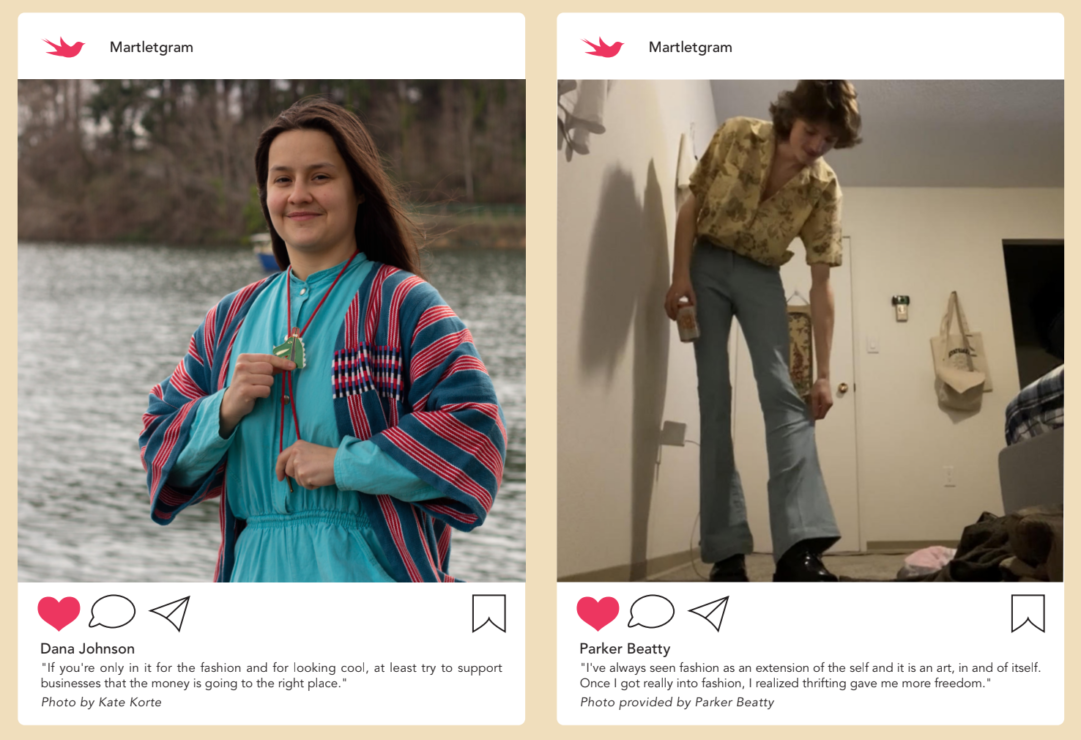
Parker Beatty, a UVic computer science and software engineering student, says he always was one to wear expressive clothing. He admits, however, that his style got crazier as he got older and learned more about experimental and niche fashion trends.
“I’ve always seen fashion as an extension of the self and it is an art, in and of itself,” Beatty said. “Once I got really into fashion, I realized thrifting gave me more freedom.”
Part of it, Beatty says, is finding what clothes make you comfortable.
“I shop in the women’s, I shop in the men’s, I’ll wear anything if it’s cool enough.”
Beatty estimates he has spent over $2 000 over the last three years and describes his style as “all over the place.” Beatty has also bought clothes to sell to other thrifters through his Instagram or Grailed.
“Fashion is for sure an outlet for me […] although completely unrelated to my major, it is always something that made me happy outside of academics.”
Jimeau and Beatty both said that finding your style goes hand-in-hand with finding your confidence.
In her first year at UVic, Jimeau found a blazer while thrifting. Donning the blazer made Jimeau realize that she could wear whatever she wanted. Now, she has the confidence to wear whatever she is drawn to whilst thrifting.
She always had an interest in wearing clothes that were different but didn’t have the confidence to rock the 70s-esque flared pants she has come to love now.
“It doesn’t matter what people think, I think if you’re confident that is the most attractive thing about anybody […] it shows that you’re comfortable with who you are.”







